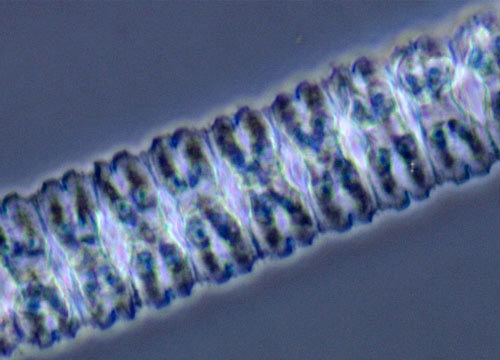Zygnema Filamentous Algae
A genus of filamentous freshwater algae, Zygnema features two stellate chloroplasts per cell. There are numerous species of Zygnema, which are distinguishable by the shape, size, and other characteristics of the zygospores they produce.
 DIC
DIC
 Phase
Phase
Phase
Zygnema species are often found alongside another algal species, Spirogyra, and can reproduce asexually, sexually, or vegetatively. In harsh conditions, Zygnema generally will produce spore-like akinetes for asexual reproduction or reproduce sexually via conjugation tubes. If reproduction is sexual, a zygospore is formed and sinks into the sediment until habitat conditions become more favorable. When algal nutrients are widely available and the environment is suitable, Zygnema frequently fragment as a means of vegetative reproduction.
DIC
Thick mats of Zygnema filaments may indicate that a body of water is enriched with nitrates and phosphates, an attribute often caused by run-off from farmlands. Water chemistry can be greatly affected by a large presence of the algae and sometimes causes serious problems for other species inhabiting the same area. The concern may be greatest during the winter months in temperate regions when algal mats die and decompose, producing a substantial biological oxygen demand caused by respiring bacteria feeding on the decaying organic material. Intense competition for limited amounts of dissolved oxygen between the bacteria and other aquatic organisms may result in a phenomenon known as winterkill, the sudden death of large populations of fish.













